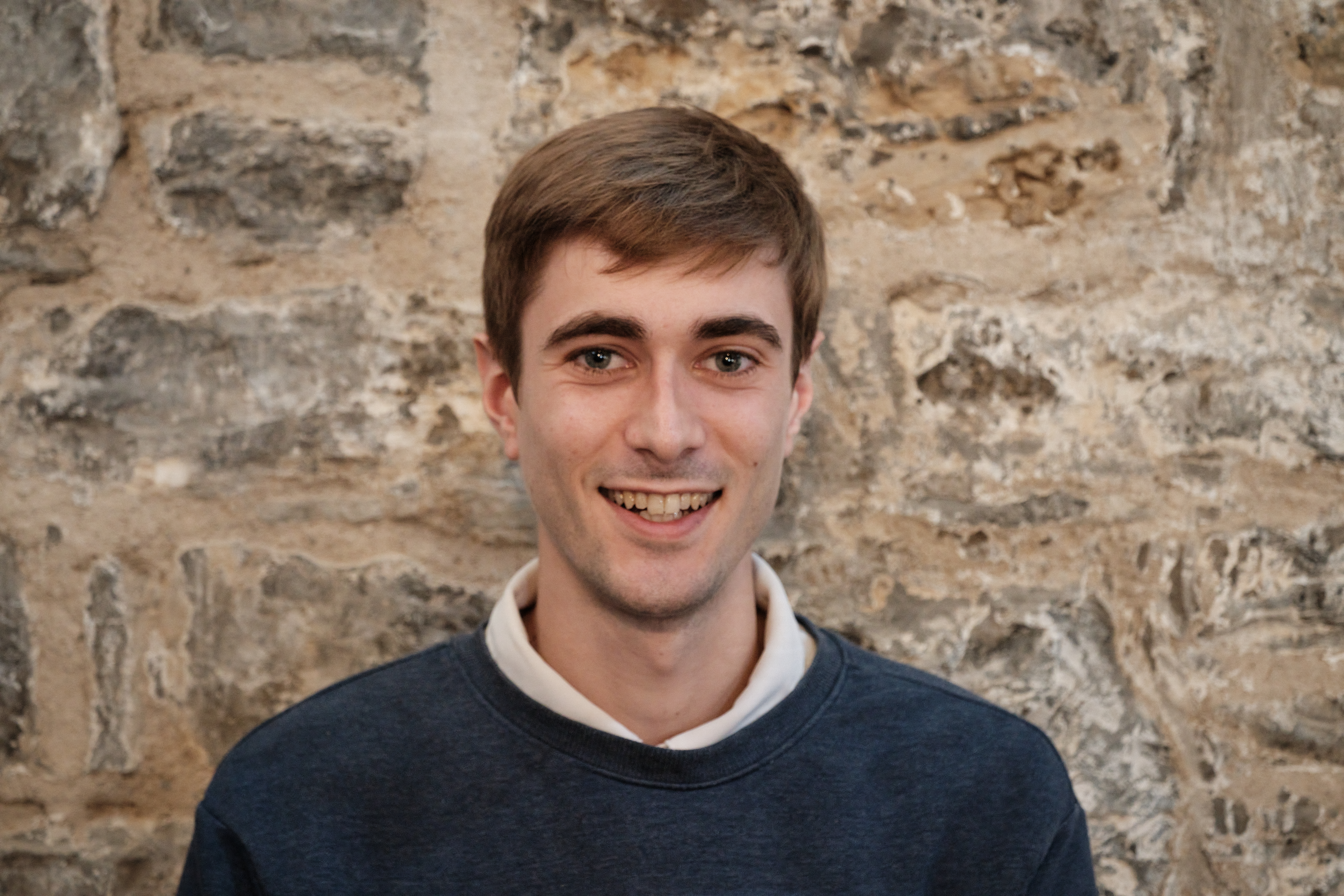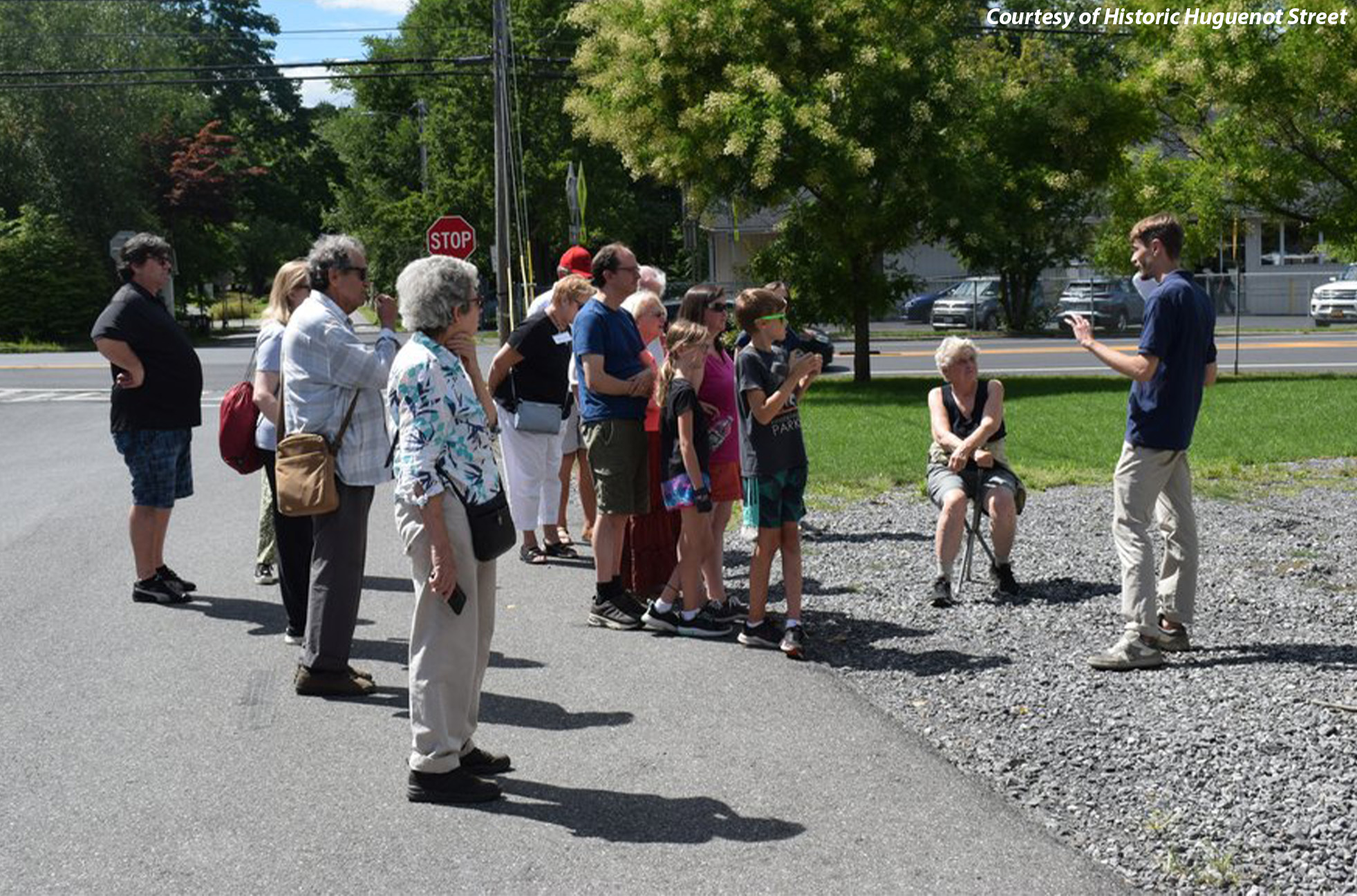‘I could see it being my purpose’: History grad expands the narrative as Ulster County Historian
Edward Moran III ’20 (History) has always had a love for history.
Growing up in the Hudson Valley as a descendant of local Huguenot and Dutch colonizers, he’s been interested in learning about the past for as long as he can remember.
He “was a history major from the day he arrived on campus,” according to Professor Lee Bernstein, his advisor in the SUNY New Paltz Department of History.
But prior to enrolling at New Paltz, Moran had an impression that the story he had access to was limited or incomplete.
"There was some early groundwork talking about enslavement, but it was still very possible to engage with local history and not hear anything about it,” said Moran. “The realization that the local history is incomplete is the moment I went from being just interested in history to seeing myself working in local history. I could see it being my purpose.”
He devoted his years at New Paltz and Historic Huguenot Street to that purpose, working to paint a more complete picture of our region’s shared heritage.
Now, just five years after graduating, Moran is stepping into a new role as Ulster County Historian. The SUNY New Paltz grad is now responsible for preserving and promoting the rich history of the county in which the University resides.
His appointment is the first in a new way of keeping official local history. The need for county historians was enshrined as an unfunded mandate in New York State law in 1919, but in 2024 Ulster County passed a new provision shifting responsibility for appointing and supervising the County Historian to the County Clerk. That paved the way for Acting Ulster County Clerk Taylor Bruck to make Moran his hand-picked appointee for the role in January 2025.
“Our office, as keepers of a large portion of the most historic records of the County, has often shouldered the burden of interpreting that history for the public,” Bruck said in a release announcing Moran’s appointment. “Having Mr. Moran as part of our team ensures that we can continue the vital work of preserving these records while giving more attention and scrutiny to the stories these records represent.”
Moran will continue to ensure a cohesive approach to historic preservation and act as an advocate for the region’s collective heritage.
But he's also bringing his own lens to the position, filtered through his experience as the full-time Tour and Interpretation Manager at Historic Huguenot Street. The well-known National Historic Landmark District in New Paltz was originally founded in 1894 by the descendants of the first settlers to preserve what remained of their French and Dutch heritage. The University has long partnered with Historic Huguenot Street for archaeological discovery, building new programs, educational opportunities, and more.

"New Paltz is blessed to not only have this deep infrastructure of history, multiple museums and a repository and a university, but have all of those institutions be ones that are dedicated to continuing that work and expanding the narrative,” said Moran. “Not every town has that infrastructure and support."
He credits New Paltz faculty with helping him gain the confidence to attain that role. As a student, Moran often wondered about the possible job opportunities in the field. “It’s a big concern for history majors everywhere,” he said. “I was fortunate enough to have incredible professors who pushed me to believe in the possibility of a career in history.”
The experience also let him see first-hand how thoughtful historical preservation and education can shift people’s perspectives. Reflecting on his own experiences as a young history lover feeling like he was not getting the full story, he dedicated himself to doing the work as well and as accurately as he could.
"He was very serious about why history mattered, and that struck me more than anything,” said Bernstein. “He saw the importance of history and the ways in which you remember and misremember the past, and that really drove a lot of his work.”
His goal is to extend that impactful approach to more communities in Ulster County and, eventually, across the state. Part of that means juggling lots of projects: He’s currently researching references to enslaved Africans and Native Americans in mid-18th century Marbletown, New York; the experiences of two enslaved people in 17th century New York; and the story of Jack and Betty, the first enslaved Africans in New Paltz’s to appear in the historical record.
“I now can really focus on these research projects related to not just New Paltz, but take that same approach to researching inclusive stories, which are a part of the story as it occurred and yet were left out in retellings about the past previously,” said Moran.
Moran can be reached via email at countyhistorian@co.ulster.ny.us or via phone at the Ulster County Records Center at (845) 340-3415.


